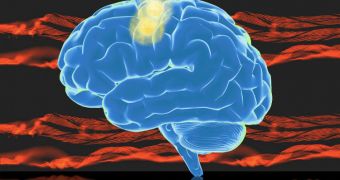According to the conclusions of a new study by an international team of scientists, it would appear that stroke impairs movement by altering the way in which muscle synergies are activated. The severity of the strokes determines the amount of alterations that occur, the group adds.
Experts at the Cambridge-based Massachusetts Institute of Technology (MIT), the Harvard Medical School (HMS) and the San Camillo Hospital in Venice, Italy, say that the brain enables us to carry out various movements using so-called muscle synergies.
What this means is that, instead of controlling and coordinating each muscle individually, the brain uses shortcuts, activating them in groups at any given time. The actions of these muscle units are then combined to allow us to pick up an object, for example.
This system of shortcuts enables the brain to perform the tasks faster, while consuming less energy. What strokes do is alter the patterns in which these muscle synergies are expressed, leading to what we perceive as impaired movements.
The severity of the stroke determines the amount to which muscle synergies are altered. The amount of time that passed since the adverse health event occurred was also found to play a role in these changes.
Details of the new investigation were published in the latest issue of the esteemed journal Proceedings of the National Academy of Sciences (PNAS). The senior author of the paper is MIT Institute Professor Emilio Bizzi.
“The cortex is responsible for motor learning and for controlling movement, so we want to understand what’s going on there. How does the cortex translate an idea to move into a series of commands to accomplish a task?” says the expert, a member of the MIT McGovern Institute for Brain Research.
One of the most significant discoveries made in the study is that that muscle synergies are structured within the spinal cord. When a stroke occurs, the brain loses its ability to combine these modules in the appropriate pattern, leading to false movements.
“To control, precisely, each muscle needed for the task would be very hard. What we have proven is that the central nervous system, when it programs the movement, makes use of these modules,” the MIT expert explains.
“Instead of activating simultaneously 50 muscles for a single action, you will combine a few synergies to achieve that goal,” he adds. This work could have important implications on developing new medication against stroke, a condition affecting 700,000 people annually, in the United States alone.

 14 DAY TRIAL //
14 DAY TRIAL //